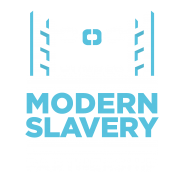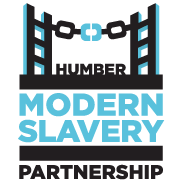19 Oct Victims of Modern Slavery in the UK 2017 – Alicia Kidd
The National Crime Agency has recently released the statistics relating to the people who were identified in the UK in 2017 as potential victims of Modern Slavery.1 These statistics provide a breakdown of the victims’ nationalities, genders, types of exploitation, and they identify whether the victims were adults or children at the time of exploitation. They also indicate which agencies referred the victims into the National Referral Mechanism (NRM).
The National Referral Mechanism is the government system used in the UK to identify and provide support to potential victims of modern slavery who are identified in the UK. It is also the main method through which data is collected on those potential victims (although Section 52 of the Modern Slavery Act – Duty to Notify the Home Office of Suspected Victims of Modern Slavery – is another method of data collection which works in addition to the NRM). It is pertinent to note that the NRM only reports on those who have been identified, and these numbers remain a small proportion of the estimated 10-13,000 victims living in the UK.2 Further, an adult must consent to being referred into the NRM, meaning that these figures do not include adults who were identified as potential victims but who did not wish to be referred into the mechanism.
Another point to highlight is that the NRM refers to ‘potential victims’ rather than ‘victims’. This is because anyone referred into the NRM must go through a two-tier consideration to determine whether ‘it is more likely than not’3 that they are a victim of modern slavery.
How many people have been identified?
In 2017, 5145 people were identified as potential victims of Modern Slavery in the UK. This number has continued to increase year on year: 2013 – 1745, 2014 – 2340, 2015 – 3266, 2016 – 3805. These figures indicate that the number of potential victims identified in the UK has almost tripled since 2013. However, this does not necessarily mean that the number of victims has tripled, but more likely that agencies are improving at identifying victims and making the appropriate referrals. In much the same way as Domestic Abuse and Child Sexual Exploitation have been topics of focus for many front line agencies in recent years, Modern Slavery seems to be the current focus of attention. This has meant that training for professionals has improved, new laws have been implemented, and policies have been established, which have all encouraged professionals and the public alike to be aware of what is meant by ‘Modern Slavery’ and to be alert for potential victims.
1 NCA (2018) National referral mechanism statistics – end of year summary 2017. Available at http://www.nationalcrimeagency.gov.uk/publications/national-referral-mechanism-statistics/2017-nrm-statistics/884-nrm-annual-report-2017/file [Accessed 17 Apr. 2018] 2 Bales, K., Hesketh, O. & Silverman, B. (2015). Modern Slavery in the UK: How Many Victims? Significance 12(3), 25. 3 NCA (n.d.) National Referral Mechanism. Available at http://www.nationalcrimeagency.gov.uk/about-us/what-we-do/specialist-capabilities/uk-human-trafficking-centre/national-referral-mechanism [Accessed 17 Apr. 2018]
Are the victims adults or children?
Of the potential victims identified by the NRM, 3027 (59%) were adults and 2118 (41%) were minors (under 18). The type of exploitation most common amongst both adults and children was labour exploitation. 1326 adults (43.8%) and 1026 children (48.4%) experienced this form of exploitation. Although victims of labour exploitation are often found in low paid, low skilled forms of labour, the NRM incorporates anyone who is a victim of criminal exploitation within the category of labour exploitation. This means that those identified as victims of labour exploitation may have endured issues such as forced begging, cannabis farming, shoplifting or benefit fraud.
What gender are the victims?
Of those 5145 identified, 2454 (47.7%) were female, 2688 (52.2%) were male and 3 were transgender. Female victims, both adult and minor, were predominantly victims of sexual exploitation: 1115 adults and 497 minors. Males, both adult and minor, tended to be victims of labour exploitation, with 1146 adults and 916 minors. These reflect the findings from 2016.
What are the nationalities of the victims?
819 of the victims were from the UK, making this the most predominant country of origin. Equal amounts of these UK victims suffered sexual exploitation and labour exploitation (393 in each category). This was followed by 777 Albanian victims, the majority of whom were used in sexual exploitation. Vietnamese nationals represented the third most prevalent nationality with 739 victims who were principally victims of labour exploitation. The 5145 victims identified by the NRM were from a total of 116 different nationalities.

What types of exploitation have the victims experienced?
The NRM categorises the types of exploitation as:
-sexual exploitation
-labour exploitation (including criminal exploitation)
-domestic servitude
-organ harvesting
In 2017, the majority of people in the NRM were victims of labour exploitation (2352, 45.7%). There were 1744 victims of sexual exploitation (33.9%), 488 victims of domestic servitude (9.5%), and three victims of organ harvesting.

What is the picture in Humberside?
In 2017, 12 people were referred into the NRM by Humberside police. Five of these were adults and seven were children.
Of the adults:
– One male from Hungary exploited for labour exploitation.
– One male from India exploited for labour exploitation.
– One male from the UK exploited for labour exploitation.
– One female from the UK where the exploitation is unknown.
– One female from Vietnam where the exploitation is unknown.
Of the children:
– One male from Nigeria exploited for domestic servitude.
– One male from Gambia exploited for labour exploitation.
– One male from Romania exploited for labour exploitation.
– Four females from the UK exploited for sexual exploitation.
In addition to the referrals made by Humberside Police, the Local Authorities in Humberside made the following referrals:
– East Riding of Yorkshire: 2 (1 adult, 1 minor)
– Hull: 1 (minor)
– North East Lincolnshire: 1 (minor)
– North Lincolnshire: 1 (minor)
There is no further information available on the Local Authority referrals.
This totals 17 referrals from the Humberside region, an increase from 8 in 2016.
The Humber Modern Slavery Partnership
In order to try and identify more people in the region, the Humber Modern Slavery Partnership was established in March 2016. This is a network of front line organisations from across the four local authority areas (Hull, East Yorkshire, North Lincolnshire and North East Lincolnshire), including statutory organisations such as the police, NHS and safeguarding; and non-statutory organisations such as local charities. The Partnership has developed a training package which has been rolled out to hundreds of front line staff and is currently working on a public awareness campaign in order to increase knowledge amongst the general public to improve intelligence in the area.




No Comments